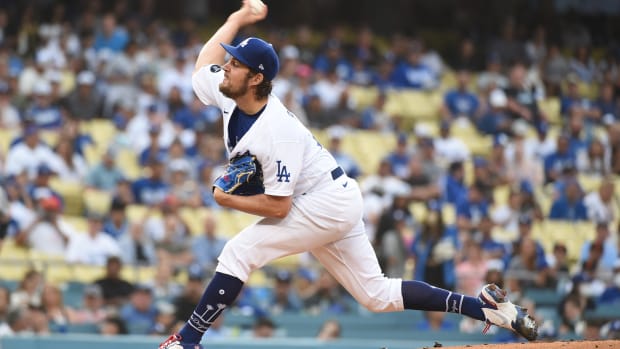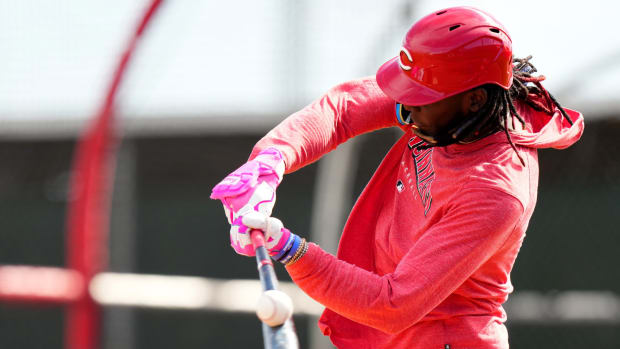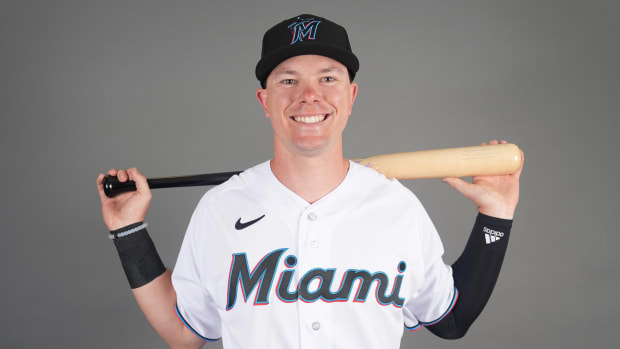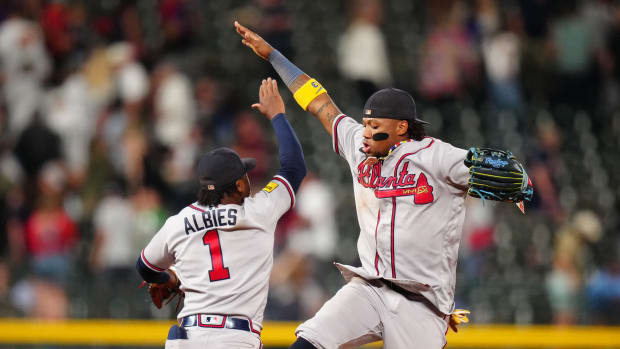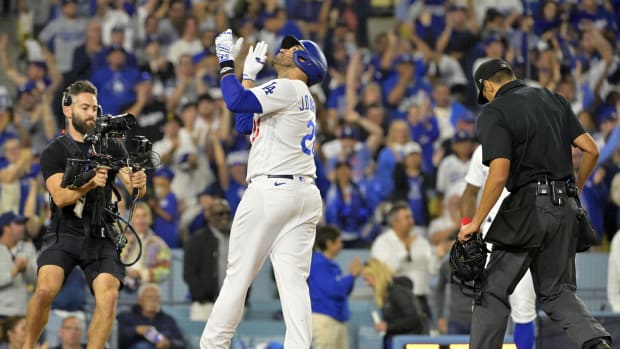Five Keys to MLB's Crucial Deal With Players Association
Major League Baseball and the Major League Baseball Players’ Association have approved a deal that answers crucial questions about how an abbreviated or cancelled 2020 season would play out. As reported by The Associate Press and other media, MLBPA approved the 17-page document Thursday night and the owners approved it on Friday.
Understanding the necessity of an agreement
Before turning to the deal’s details, it’s worth explaining why the deal is so necessary. The collective bargaining relationship between the league and players makes it essential.
Like other pro leagues, MLB and its players rely on labor law to determine rules impacting players’ wages, hours and other working conditions. There are hundreds of pages of rules and numerous details. The rules include very impactful policies, such as when a player can become a free agent, how the competitive balance tax works and under which circumstances players can be subjected to drug testing. Other rules are much less significant in the grand scheme of things but still require specific answers. For instance, what happens when a club can’t provide a first-class airline seat to a player? Answer: the club must provide a single seat in the next highest premium seating classification. How about how many meals must a club provide to each player? Aanswer: when games begin at 1 p.m. or 7 p.m., the club must supply lunch or breakfast, pregame and postgame meals, but when a game begins at 4 p.m. clubs must offer breakfast, lunch, pregame and postgame.
All of these rules are negotiated and contained in a collective bargaining agreement. By virtue of being collectively bargained, the rules are immune from scrutiny under Section 1 of the Sherman Antitrust Act. This is important for MLB. While MLB has a historic exemption from federal antitrust laws, the exemption was limited by the Curt Flood Act of 1998. It no longer shields MLB from scrutiny for suppression of major league players’ wages.
Under law labor, neither side can unilaterally alter the CBA or modify player contracts. The current CBA is set to expire on Dec. 1, 2021. This presents a structural problem for the league and players: the CBA doesn’t contemplate a pandemic-altered season.
To illustrate the impact of this problem, consider that players’ eligibility for arbitration and free agency hinges on service time and accumulation of so-called “full years.” Under the CBA, a full year is one where a player spends at least 172 days on a team’s active roster or injured list. This metric made sense until the coronavirus pandemic struck and forced the rethinking of a season’s duration.
Performance incentives in player contracts provide another illustration. The uniform player contract (UPC) is a bargained document that is contained as an appendix to the CBA. The UPC can only be altered in limited ways, one of which is performance incentives. Bonuses based on accumulative statistics, such as plate appearances for a hitter or games for a reliever, would be much more difficult (if not impossible) to reach in a pandemic-shortened season.
Why MLB had leverage in the negotiations
The league had considerable leverage in striking a deal with the players. This reflects paragraph 11 of the UPC. Paragraph 11 is the “national emergency” clause and it states that clubs can suspend player contracts “during any national emergency during which Major League Baseball is not played.” In other words, teams don’t have to pay players when games are postponed or cancelled during a national emergency.
Paragraph 11 clearly applies to the current state of affairs and it might remain applicable for many months, too. On March, President Donald Trump proclaimed a national emergency in light of the pandemic. Although the President has suggested that the country could conceivably resume some level of normal activities by Easter (April 12), many public health experts view the pandemic as a longer-term issue. Stated differently, the national emergency might not end anytime soon.
Along those lines, more than 96,000 Americans have been diagnosed with COVID-19. There is anticipation that as more test kits become available, the number of persons classified as infected will increase considerably—and that’s true even if social distancing, stay-at-home, self-quarantining and similar measures are taken seriously. This dynamic is relevant to MLB since if the pandemic continues into the summer months and if the season is cancelled, Paragraph 11 would allow for clubs to not pay players their 2020 salaries.
Five key points to the new agreement
The CBA is a contract and contracts can be amended, qualified or otherwise altered so long as management and labor agree to the changes. The two sides have reached a resolution that addresses key employment terms that would be impacted by an abbreviated or cancelled season. There are five key take-aways.
• First, MLB has committed to advancing $170 million in salaries to players, with the bulk of the money going to players who earn comparatively lower wages. MLB will distribute these advances over two stages. MLB also agrees that even if the season is cancelled, the $170 million is non-refundable. The players will get it and keep it.
The $170 million is a “win” of sorts for the players since, as discussed above, MLB could have paid players $0 in the event of a cancelled season. But at the same time, $170 million is a relatively small amount in the economics of baseball. It amounts to less than 5% of expected MLB payrolls for 2020 (teams would be on the hook for about $4 billion if the pandemic hadn’t occurred). To put $170 million in further perspective, it is roughly the amount of 2020 payroll for one club, the Los Angeles Angels, which has the seventh highest payroll in MLB.
• Second, players obtained assurances that an abbreviated or cancelled season would not damage the accrual of service time. MLB could have argued that service time is predicated on actual play. MLBPA, in turn, could have insisted that service time, as defined in the CBA, doesn’t necessitate “play” but rather roster status—namely, whether a player is on an active roster or injured list.
The two sides hatched an agreement that favors the players. Specifically, if an abbreviated season is played, players would get the service time equivalent for a full season. For instance, if the season was reduced by 60%, a player’s service time could be adjusted upward to reflect the reduction in season-length. Alternatively, if the season is cancelled, MLB has pledged to recognize an equal amount of service in 2020 as the player had amassed in 2019 (so long as player is on the active roster or injured list). As a result of these changes, Los Angeles Dodgers outfielder Mookie Betts and other players who are currently set to become free agents next winter will still get that opportunity.
While these changes affect clubs the same way, they pose very different baseball consequences. The Dodgers know this too well. Last month, they traded Alex Verdugo, Jeter Downs, and Connor Wong to the Red Sox for Betts and David Price under the assumption that Betts would play for them in 2020. It’s now possible that they traded away two prospects and a promising young outfielder in exchange for a former MVP who never plays a game in Dodgers blue (the Dodgers would still get draft pick compensation if Betts signed elsewhere next winter).
• Third, MLB and MLBPA have resolved how arbitration hearings would be determined in an altered season. Generally speaking, arbitration is available for players with at least three years, but less than six years, of service time. Arbitration allows a player (and his agent) to square off against the club in a proceeding overseen by a panel of arbitrators. The arbitrators are tasked with determining appropriate pay for the player in his upcoming season. In making that determination, the arbitrators compare a player’s statistics to those of other players. This presents a problem in a season with fewer games. For instance, if the 2020 season contains 50 games instead of 162 games, a player who belts nine home runs would have hit the equivalent of about 29 home runs over a 162-game season. The deal makes clear that arbitration decisions based on an abbreviated season would not create new precedent and would be adjusted accordingly.
• Fourth, the deal provides MLB with flexibility on the amateur draft. MLB can reduce the 2020 draft from 40 rounds to five rounds and the 2021 draft from 40 rounds to 20 rounds. MLB also gains flexibility on when the draft is held. Clubs, moreover, will be able to defer draft pick signing bonuses. The deal also caps the amount signing bonuses of undrafted players (there would be many more of them if the draft is reduced in size by a whopping 88%) to $20,000.
Fewer rounds will give undrafted players who are pursued by multiple clubs an opportunity to pick the best club for them. Overall, though, these changes limit compensation opportunities, as well as the timing of those opportunities, for both drafted and undrafted players. Obviously, draft-eligible players lack suasion on MLB-MLBPA negotiations: they aren’t in the union. It’s thus not surprising that draft-eligible players are going to experience much of the “cost” of this deal. While that may seem unfair, labor law generally permits unions to bargain on behalf of prospective employees.
• Fifth, the deal extinguishes the risk of an unpopular legal fight between owners and players over how to divide money. Many are old enough to remember the 1994-95 MLB strike. It took years, and a steroids-inflated home run chase, for MLB to regain fans who lost interest in a sport that seemed driven by the greed of all involved.
It’s smart for owners and players to avoid a similar narrative 25 years later. We are living in a time when a growing number of people are fighting COVID-19, and small percentage of them will lose that fight. Among the healthy, stress levels are high, jobs have been lost, 401(k) values have dropped and day-to-day lives have been disrupted. Now is not the time for a labor-management fight involving very wealthy persons.
The great unknowns
MLB and MLBPA deserve credit for game-planning a strategy that addresses the uncertain times ahead. The deal supplies considerable flexibility in terms of scheduling and the use of doubleheaders. It’s clear that if resumption of MLB games is possible within parameters deemed acceptable by public health officials, both owners and players will make that happen.
Yet MLB and MLBPA have no control over how the pandemic plays out and limited authority over whether resumption of sports will be possible this year. Even if resumption were possible, all bets are off as to what that would mean in practice. States and cities have adopted gathering restrictions and stay-at-home policies that in some instances would make playing MLB games, even without spectators, unlawful activities. While those restrictions could be lifted by the summer, there’s no guarantee that will happen.
It’s also unclear how MLB players would be tested in such a way that provides assurance they aren’t infected and thus wouldn’t infect their teammates, coaches as well as opposing players and umpires. There is a shortage of swabs and other testing equipment in the United States and differing views on when that shortage will be remedied. If MLB arranged for regular testing of players at a time when many Americans are symptomatic and without access to tests, it could become a public relations problem for MLB. The NBA is already aware of that line of criticism in the aftermath of its players being tested (upon orders from public health officials).
Sponsors and networks, neither of which are parties to baseball’s CBA or the MLB-MLBPA agreement for 2020, are also relevant to this discussion. As previously explained in Sports Illustrated, sponsors and networks could demand major financial concessions from MLB and its clubs. They could be empowered by force majeure and impossibility clauses in making those demands. The potential drop in revenue for MLB and its clubs—particularly if spectators aren’t allowed in ballparks for the foreseeable future—could lead to far less lucrative player contracts.
In sum, the MLB-MLBPA deal for the 2020 season is an encouraging first step. But it’s a step on a path with an unknowable destination.
Michael McCann is SI’s Legal Analyst. He is also an attorney and the Director of the Sports and Entertainment Law Institute at the University of New Hampshire Franklin Pierce School of Law.
































